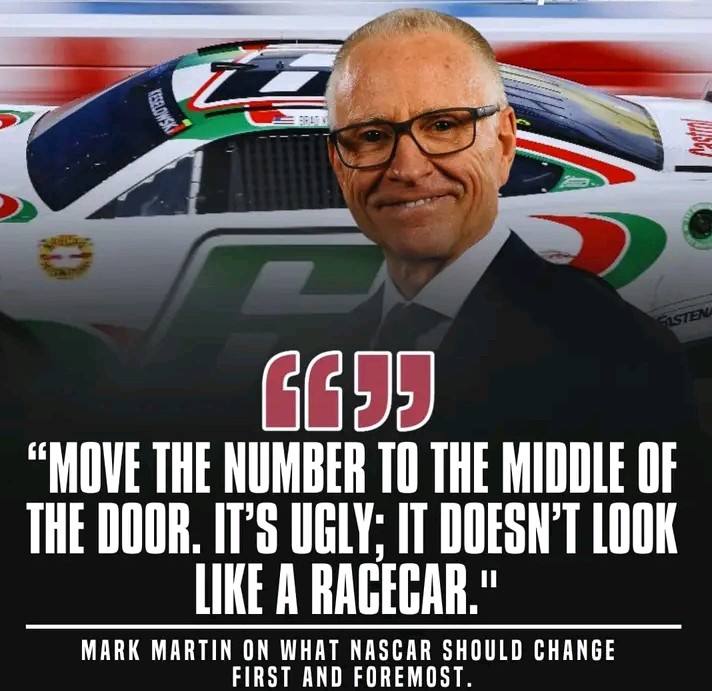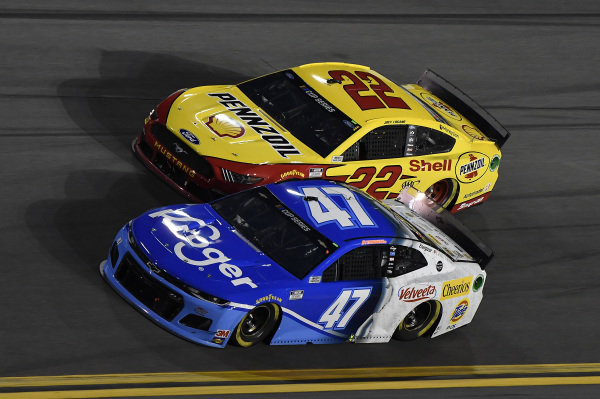When a NASCAR legend like Mark Martin speaks, people listen. Known for his no-nonsense approach on and off the track, Martin isn’t shy about sharing his thoughts on what could improve the sport he dominated for decades. His latest critique? The positioning of the numbers on race cars.
For purists like Martin, racing is more than just speed, tactics, or sponsorships. It’s about the soul of the car – the identity that fans and drivers have revered for generations. In recent years, NASCAR has shifted the location of car numbers, moving them away from the middle of the door to make room for sponsor logos. To many, this is simply an aesthetic change, but for Martin, it’s a breach of tradition. “Move the number to the middle of the door. It’s ugly; it doesn’t look like a racecar,” he insists, in a statement that resonates with many die-hard fans of the sport.
NASCAR’s decision to adjust the number placement has met mixed reactions from the community. On one side, there’s the practical argument: more space for sponsors means more revenue for teams, which helps them stay competitive in a financially demanding sport. But on the other side, enthusiasts like Martin argue that these changes are eroding the sport’s identity.
For those who grew up watching stock cars with bold numbers plastered proudly in the center of the doors, this shift feels like a departure from the essence of NASCAR. The number, after all, is not just an identifier – it’s a legacy. Think of the iconic 3 of Dale Earnhardt or the 43 of Richard Petty. These numbers became synonymous with their drivers and helped carve out an emotional connection between the fans and the sport. By relegating them to the side for the sake of advertising space, Martin believes NASCAR is risking the very thing that makes it special – its authenticity.
Mark Martin’s passion for this issue also highlights a broader concern that many long-time fans share. As NASCAR continues to modernize, some wonder if the sport is sacrificing too much of its heritage in the process. Adjusting rules, introducing new car designs, and adding diverse venues are all necessary evolutions, but they should be balanced with preserving the history that built the sport.
Martin’s comments also point to a larger conversation within NASCAR about how much the sport should evolve to attract new fans versus staying true to its roots. In recent years, NASCAR has made a number of changes to appeal to a broader audience, including road courses, new car models, and even the Next Gen car design. While these changes have brought fresh excitement, there’s a growing concern that too many modifications may alienate the loyal fanbase that has supported the sport for decades. For many, the small details, like number placement, symbolize a connection to NASCAR’s golden years, a time when tradition and simplicity reigned supreme. Martin’s appeal is not just about the aesthetics of a racecar – it’s a reminder that NASCAR must tread carefully as it navigates the fine line between progress and preservation.
Ultimately, Mark Martin’s call for NASCAR to restore the number placement on race cars may seem like a simple suggestion, but it’s steeped in a deep love for the sport. It’s not just about what looks good; it’s about preserving the identity and tradition that make NASCAR a beloved pastime for millions.
As the sport moves forward, the challenge will be finding a balance between honoring the past while embracing the future. But if Mark Martin has anything to say about it, that future should still look like a racecar – with numbers proudly in the middle of the door.
Mark Martin Knows What NASCAR Needs to Change First




